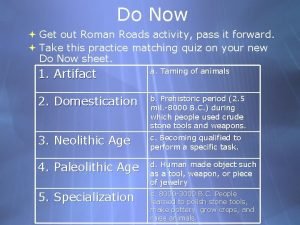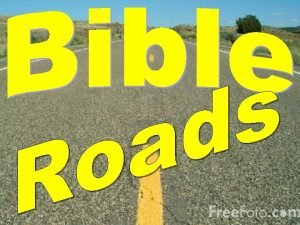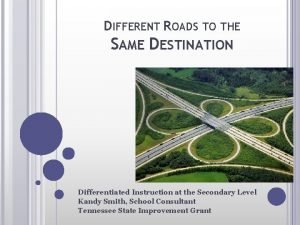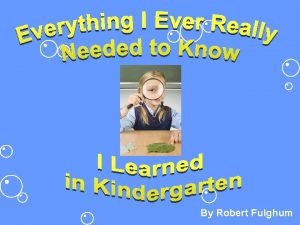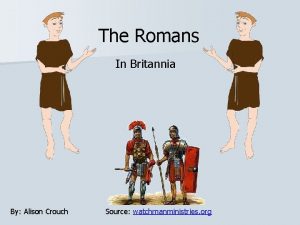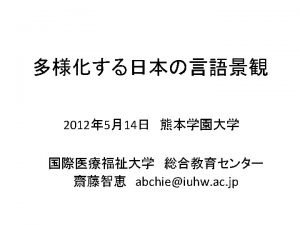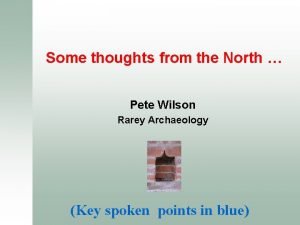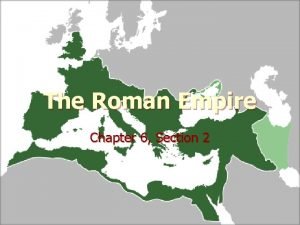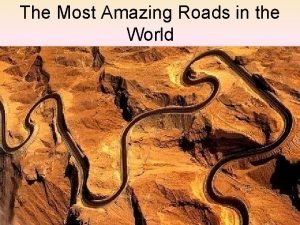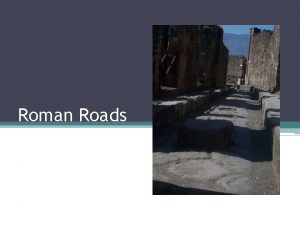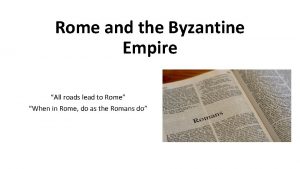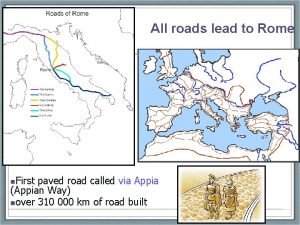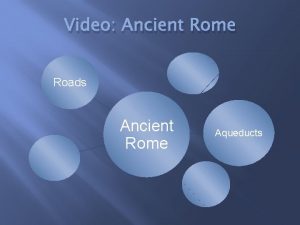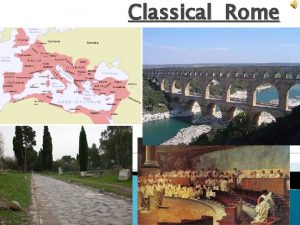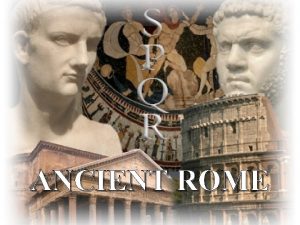Do All Roads Really Lead to Rome Constructing













- Slides: 13

Do All Roads Really Lead to Rome? Constructing a Roadmap for Aquaculture Permitting in Connecticut Tessa Getchis Connecticut Sea Grant University of Connecticut Groton, Connecticut 06340 -6048 <tessa. getchis@uconn. edu>

Aquaculture in Connecticut. Brief Overview of the Industry 1. Oyster culture in the state is a century-old practice 2. 61, 000 acres are under cultivation for shellfish in Long Island Sound 3. $13 million dollar oyster and hard clam industry 4. Small freshwater finfish (trout) culture industry (10 farms; approximately 5% of revenues for aquaculture) 5. Aquaculture generates 40% of the total value of all fishery products landed in the state 6. 600 jobs (40 companies) provided directly by the industry (shellfish shippers, harvesters, and shellfish/finfish hatcheries) Sources: W. A. Cowan, 2001; CT DA/BA, 2002

Aquaculture in Connecticut– The HOT issue – Marine Aquaculture Permitting There has been a transition (1990 s) from traditional bottom culture practices to use of floating and submerged grow-out structures New legislation (1999) created a complex permitting system with multi -agency responsibilities for aquaculture practices In-water structures (cages, bags, racks, longlines) present a unique permitting challenge to the regulating agencies

Competing User Groups Cultured shellfish are one of CT’s most economically viable natural resources within the state; however, there are many competing uses (users) of the waters of Long Island Sound in which these shellfish are grown: Recreational and Charter Boating Commercial Fishing and Lobstering Swimmers Recreational Shellfish Harvesters Ferry routes Freighters

Navigation Hazards Floating or submerged aquaculture structures may interfere with activity within major navigational channels. Areas of significant conflict are at the mouths of major rivers, narrow waterways, and adjacent to coastal islands. Structures may cause: Interference with shipping Clogging of boater traffic Boater safety Obstruction of navigational channels

Environmental Impacts Aquaculture structures may have a significant impact on the environment within which they are placed. Although there are beneficial environmental impacts of shellfish culture (i. e. providing structure for habitat, enhancing water clarity and quality, etc. ), negative impacts must be considered when siting projects, such as: Submerged aquatic vegetation (SAVs) Essential fish habitat Bird nesting areas Shading

Roadblocks in Permitting The entire permitting process usually requires 60 days, but in reality, some applications have only been permitted after several months or years Public perception weighs heavily in permitting process Permits may require additional review if there application has potentially significant environmental impacts or navigational hazards Permits may be issued with several conditions (e. g. water quality assessment, eelgrass survey) or may require additional permits (regulatory markers, structure permit) and fees Any changes to application require new application Permits issued as of 2002 are short-term (2 years)

What’s Causing Roadblocks? Because of the number of conflicting uses and hazards within Long Island Sound, aquaculture structures are regulated strictly Because the lead agency for aquaculture (DA/BA) is not the lead agency for coastal zone management (DEP), aquaculture structures must be approved by both state agencies Because aquaculture structures are not necessarily present on a lease (e. g. landbased upwellers, cages under docks), the structure may require additional permits (and accounting for) from a number of agencies Because there is a state-town jurisdiction line through LIS, municipalities may require additional leases and permits.

Applicant Submits Joint Application USACE Issues IP This is all that the regulatory agencies expect the regulated community to know. USACE Denies IP USACE issues Cat II PGP Applicant Must Obtain DEP-OLISP Permit USACE issues Cat II PGP w/conditions

Applicant Submits Joint Application CT DOA US EPA US ACOE NMFS US FWS CT DEP Boating CT DEP Fisheries USACE Issues IP (1) Substantial Concerns CT DEP OLISP (2) No Concerns DEP Conducts Federal CZMP Consistency Review (3) Minimal Concerns Is the project exempt from DEP permits? No Yes Monthly Federal Joint Permit Processing Screening Meeting State Objects (1) (2) (3) Letter to Applicant: Structure Regulated by DEP Copy sent to local Shellfish Comm. State Concurs USACE Individual Pmt Process Cat. II DEP sign-off Applicant Must Obtain DEP-OLISP Permit USACE Denies IP USACE issues Cat II PGP w/conditions

What role does Sea Grant Extension Play? Permit Streamlining SGEP brought regulators together to develop standard procedures for multi-agency permitting of aquaculture and to form a permitting workgroup (2002) Stakeholder Communication SGEP initiated a workshops series that brought in partners from USACE, DEP, DA/BA, and local shellfish and harbor management commissions discuss local and state permitting concerns (2003) SGEP and permitting workshop offer several workshops for growers (e. g. completing the application, eelgrass surveys, conditions surrounding gear types) (on-going)

Goals of Permitting Workgroup Development of standard procedures for multi-agency permitting aquaculture operations; Development of a publicly available “roadmap” explaining the standard procedures for permitting; Web-enabling the “roadmap”; Getting more people involved and educated; and, Assisting State in developing a strategic plan for aquaculture in CT

So Where Does Rome Fit In? There is not direct route for processing aquaculture applications. The permitting workgroup has a significant task ahead of them to make permitting more efficient for growers. Permitting is in many cases, delayed or denied because of the roadblocks in the application process. The Good News – Many stakeholders (growers, extension, regulatory agencies, environmental groups and the general public) are working together to make the process more efficient and streamlined. rome e Rom e m Ro Rome
 Modern roads vs roman roads venn diagram
Modern roads vs roman roads venn diagram Road leading to rome
Road leading to rome Many roads lead to the same destination
Many roads lead to the same destination Fulghum all i really need to know
Fulghum all i really need to know Lead magnesium niobate
Lead magnesium niobate Name all the rays
Name all the rays Alison crouch
Alison crouch How many must a man walk down
How many must a man walk down Billboards
Billboards Dr toller wilson
Dr toller wilson Ideality roads
Ideality roads Geometric design of highways
Geometric design of highways Chapter 6 section 2 the roman empire answer key
Chapter 6 section 2 the roman empire answer key Most amazing roads in the world
Most amazing roads in the world
